
10 minute read
CIRCUMNAVIGATING VI IN A COUPLE OF OLD SAILBOATS
background image
Shipwreck sculpture at Louie Bay
Advertisement
opposite
A fine perch after rounding Brooks Peninsula
Fair Winds and Mast Destruction
THE THIRD INSTALMENT IN A FOUR-PART SERIES —Previous instalments in Passions Winter 2020 & Spring 2020 (fairwinds.ca)—
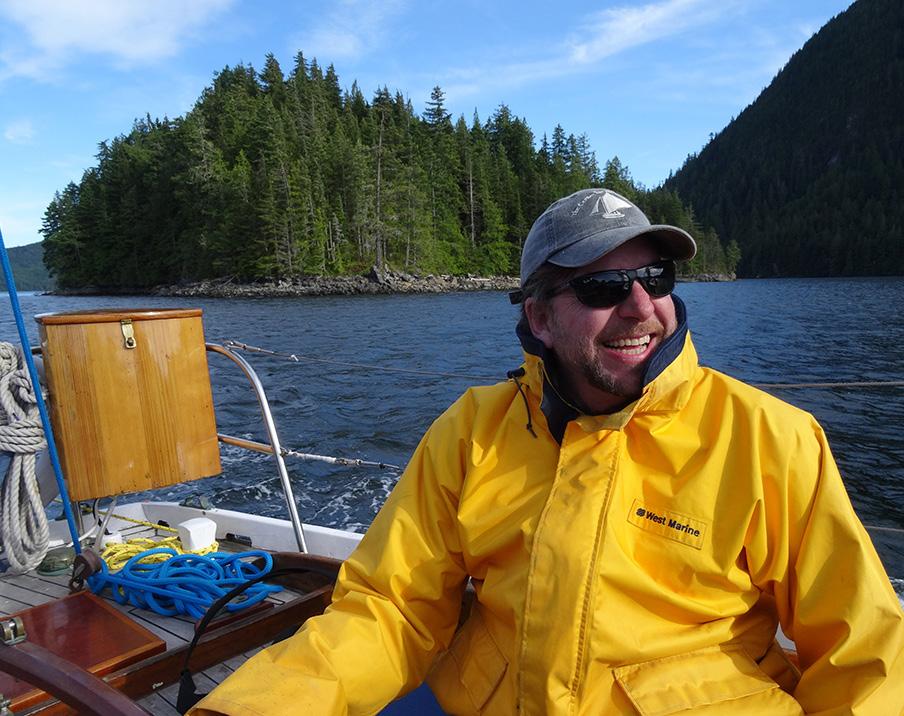
by Rob O’Dea
We motored out of an overcast and rainy Winter Harbour, with a forecast that called for worsening conditions through the day. Our plan was to go the 20 nautical miles to Klashkish or Klaskino, where we would spend a few days waiting for better weather conditions before tackling the big passage around Brooks Peninsula. Within the first hour of the day we were bucking directly into a 15-knot wind, four to six-foot waves, and driving rain with less than a mile of visibility.
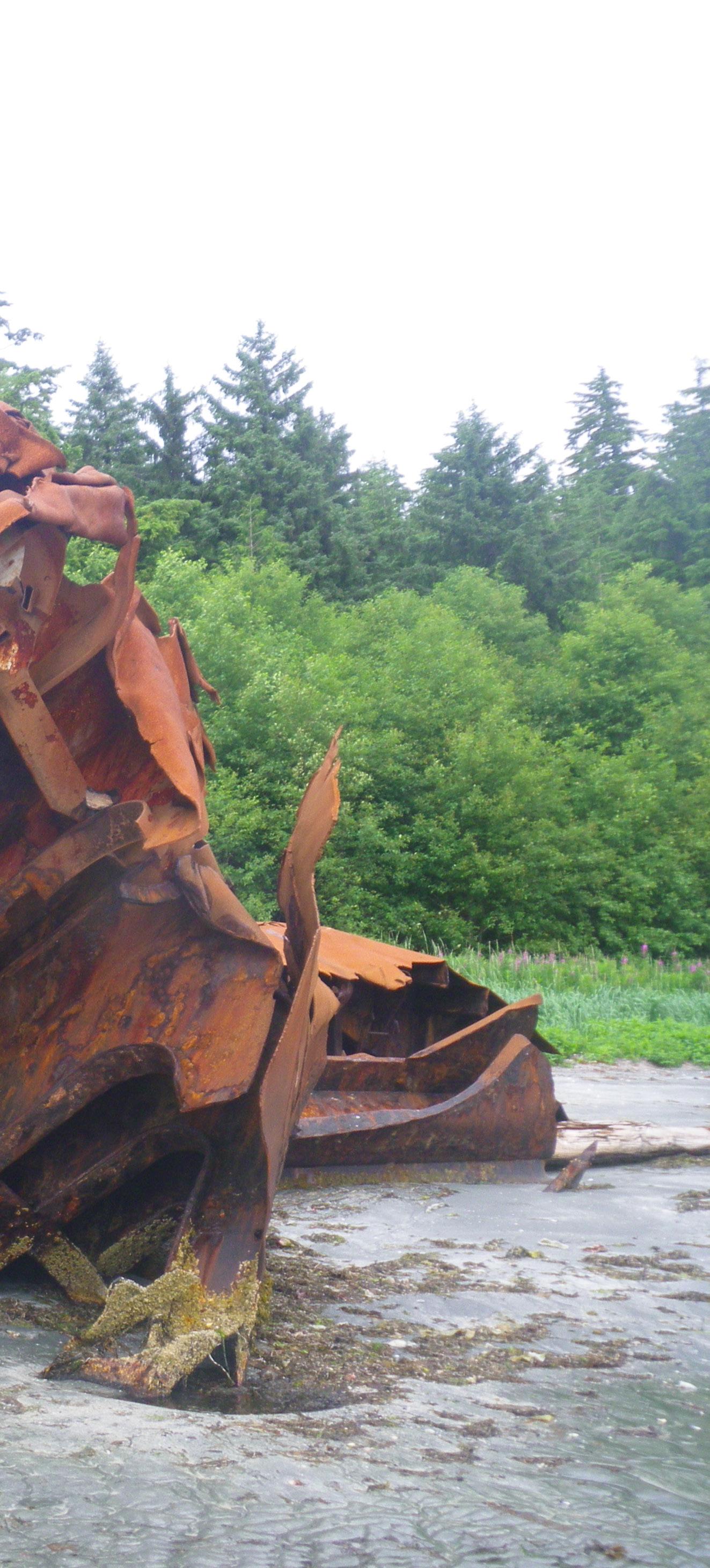
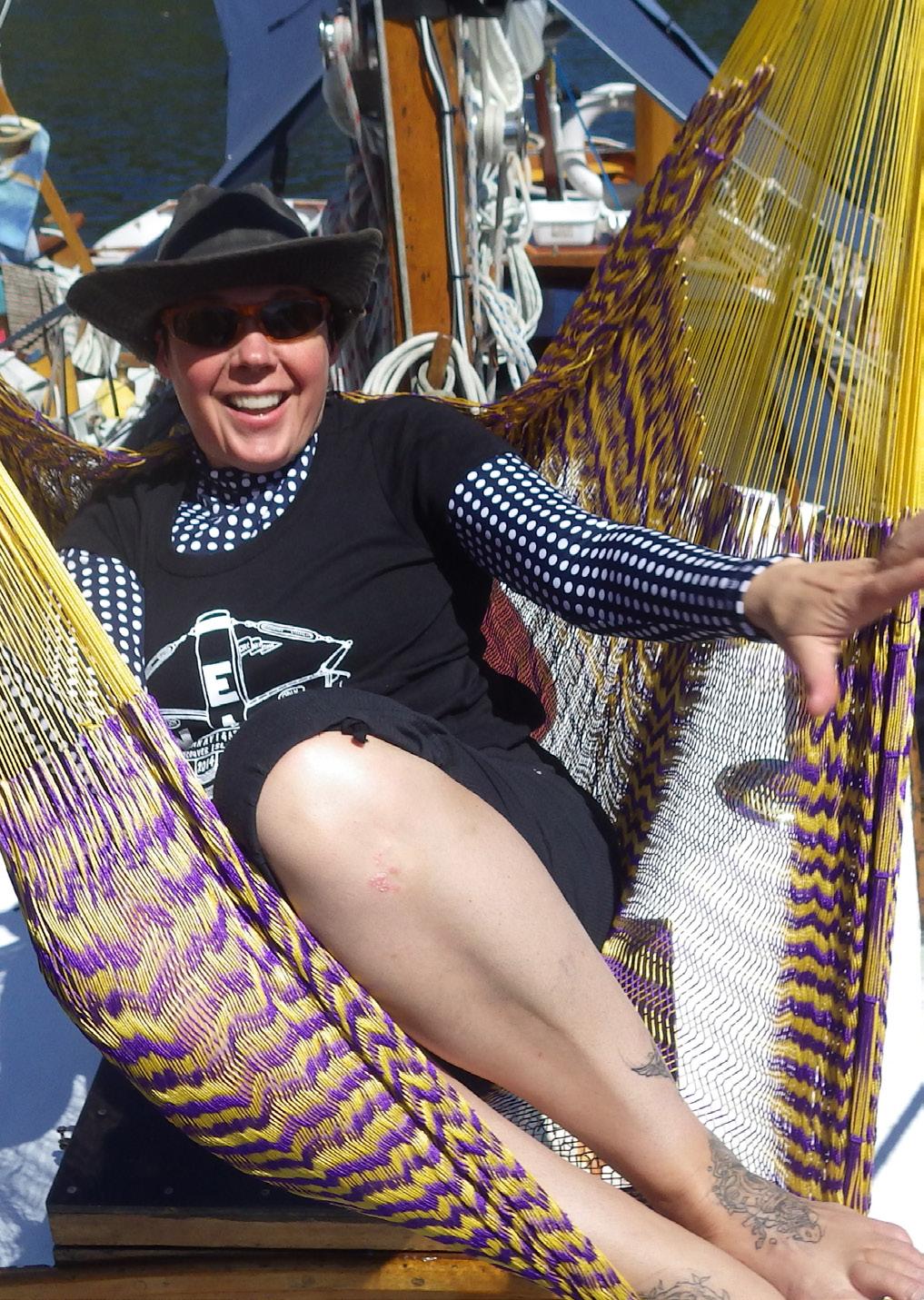
With the addition of the tide against us, it took three hours of motor sailing just to reach the halfway point. Not impossible conditions, but it is worth noting that this particular day was my crewmate and partner Sharon’s first day ever of sailing in an ocean swell, and Donald, over on Odin with skipper Arnt, was new to sailing and swell… his previous boating experience was limited to canoeing on lakes and rivers. So there would be no sailing heroics until our crew felt comfortable being on the Pacific side of Vancouver Island. After a brief call between the three boats, it was wisely decided to cut the day short and we spent the night tucked in behind a small island on the south shore of Quatsino Sound. We lit the furnace and enjoyed a great meal followed by live music, before bedding down for a restful night.
There’s a special kind of anticipatory joy when a sailor wakes on the morning of a major passage to find all conditions in their favour, and on this morning, we awoke to clear skies and a 15-knot NW wind, perfect for the 32-mile trip around Brooks Peninsula. Brooks is an 18-km-long spine of 2,000-foot-tall mountains that juts out into the Pacific, forcing the wind, waves, and currents to build at its notorious western point, Cape Cook (a.k.a. the “Cape of Storms”). Many years earlier, on a pinky schooner that he had built with his father Lloyd, Arnt was stuck just north of Brooks Peninsula for days, waiting for passable conditions at Cape Cook. Timing for our passage around Brooks was critical for the safe continuation of our circumnavigation and today looked to be perfect, but we agreed to finalize our decision once we were out sailing and could confirm the conditions for ourselves.
Twenty minutes after our departure, we were flying along on a perfect beam reach, our fastest point of sail. We rounded Lawn Point, and Brooks Peninsula loomed before us with Cape Cook visible 16 miles in the distance. After checking the latest weather forecast and a brief chat on the VHF radio, the skippers agreed to get while the gettin’s good, and we pointed our sailboats toward Cape Cook. In just two hours we were passing between Cape Cook and Solander Island, a quarter-mile-long, 300-foot-tall lump of near-barren rock that is a designated ecological reserve and bird sanctuary. We could smell and hear Solander before we passed by due to the thousands of birds and a colony of massive stellar sea lions hauled out in the sun. A puffin flew by and between the familiar bird and the big, confused seas, for a moment I felt like I was home on the water in my birthplace of Newfoundland. Sharon and I were feeling quite at home on Ern. Even though the NW wind at Cape Cook had built to 20-25 knots and the waves were now regularly four meters, our trusty wooden sailboat was running like a thoroughbred, surfing down big waves with a surge of excitement, charging ahead at up to 8.7 knots and never going below 7 knots, but always in balance and control. All was running so smoothly and comfortably that Sharon was happy to take the tiller and sail the three hours to our next anchorage on the SE shore of Brooks Peninsula. Once Ern was settled in the new anchorage, I set to work squeezing limes and chipping ice to make margaritas, the first round of which I delivered to Sharon who had moved from the tiller to the hammock which was now swinging on Ern’s foredeck in the hot sun. When the other two boats arrived, we all celebrated the excellent passage around Brooks, best
Hello, my name is Charlie
Tucked in behind an island
Cape Cook a.k.a. the “Cape of Storms”
Winter Harbour crew change and reunion
Kyuquot Columbia Cove Bunsby Islands
Predator tracks at Rugged Point Marine Provincial Park
Port McNeill for a new mast
Root Ball Collision
Odin is dismasted
Awaiting supplies and a new crew at Mary Basin
Abandoned steel hulks at Louie Bay
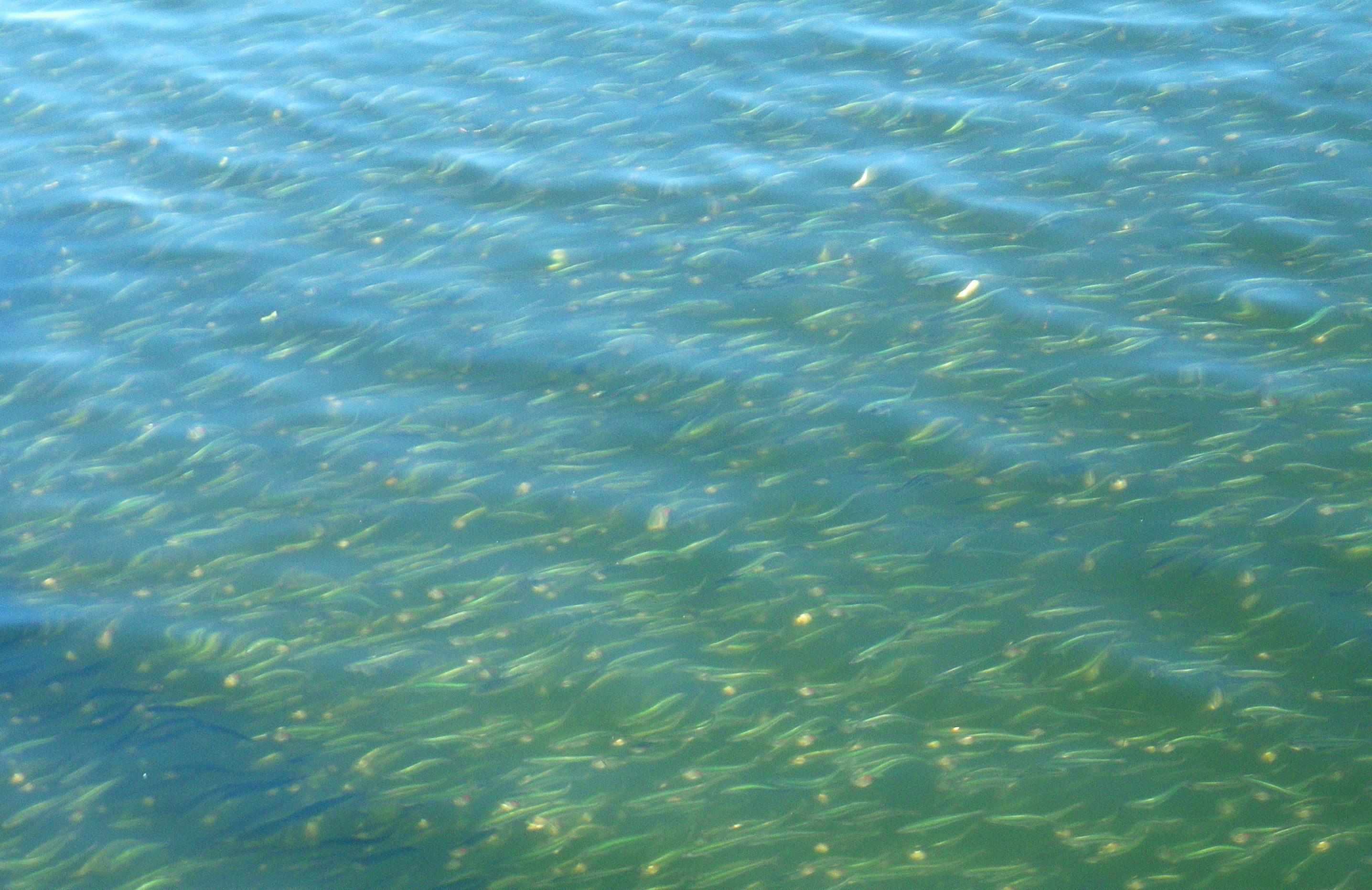
Whirlpool Rapids Green Point Rapids
Yuculta and Dent Rapids Powell River Prawn Festival
PACIFIC HERRING
Watch Beauty and the Feast: When Herring Come to Spawn, to learn more about the Pacific herring. www.hakaimagazine.com/videos-visuals/beauty-and-the-feast-when-herring-come-to-spawn/ Videography by Grant Callegari, Produced and edited by Meigan Henry, Field production by Josh Silberg, Additional footage by Tristan Blaine and VideoBlocks.
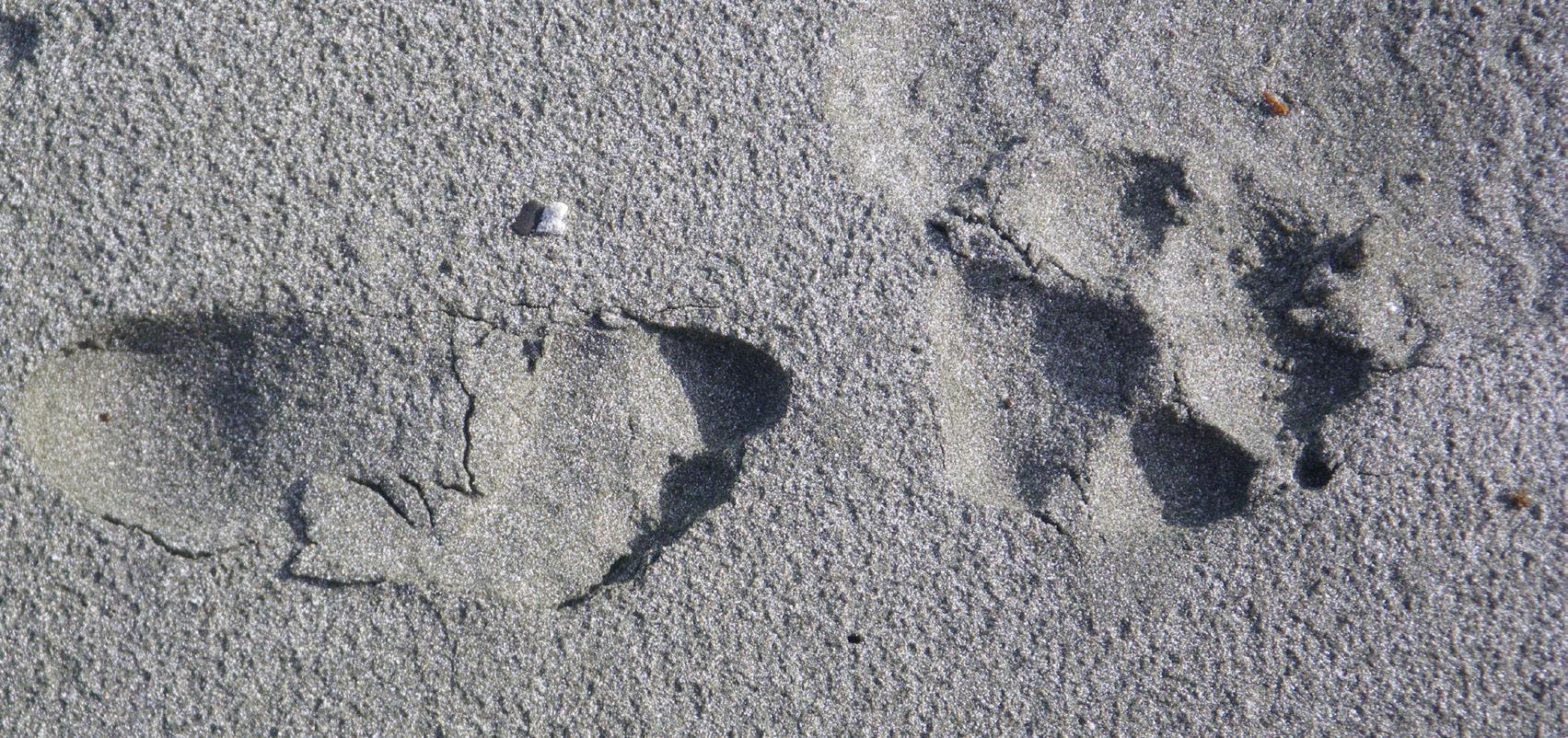
Retreat from the gale
Sea sickness strikes
Engine troubles
top
School of herring at Bunsby Island
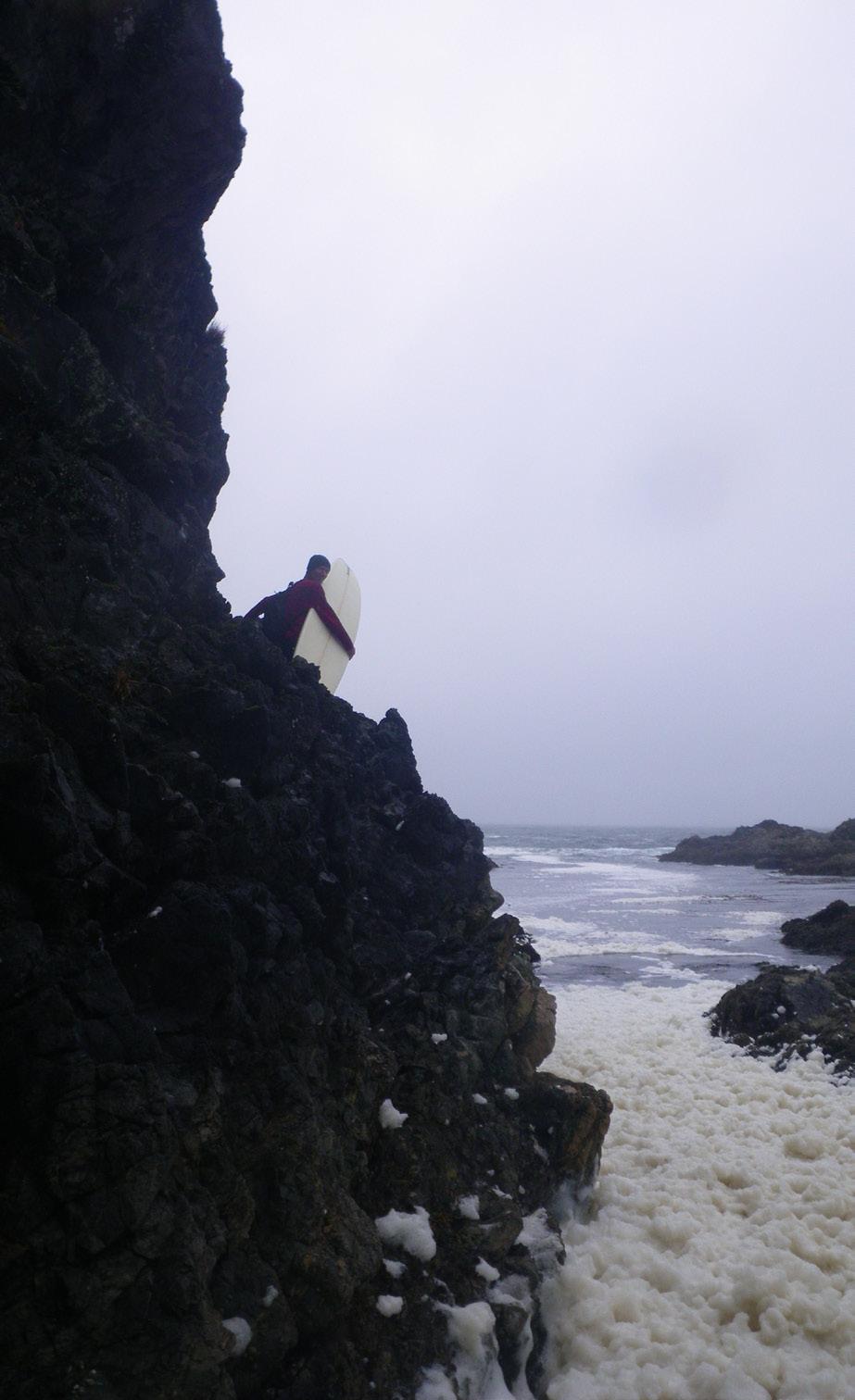
above
Human and wolf print at Rugged Point
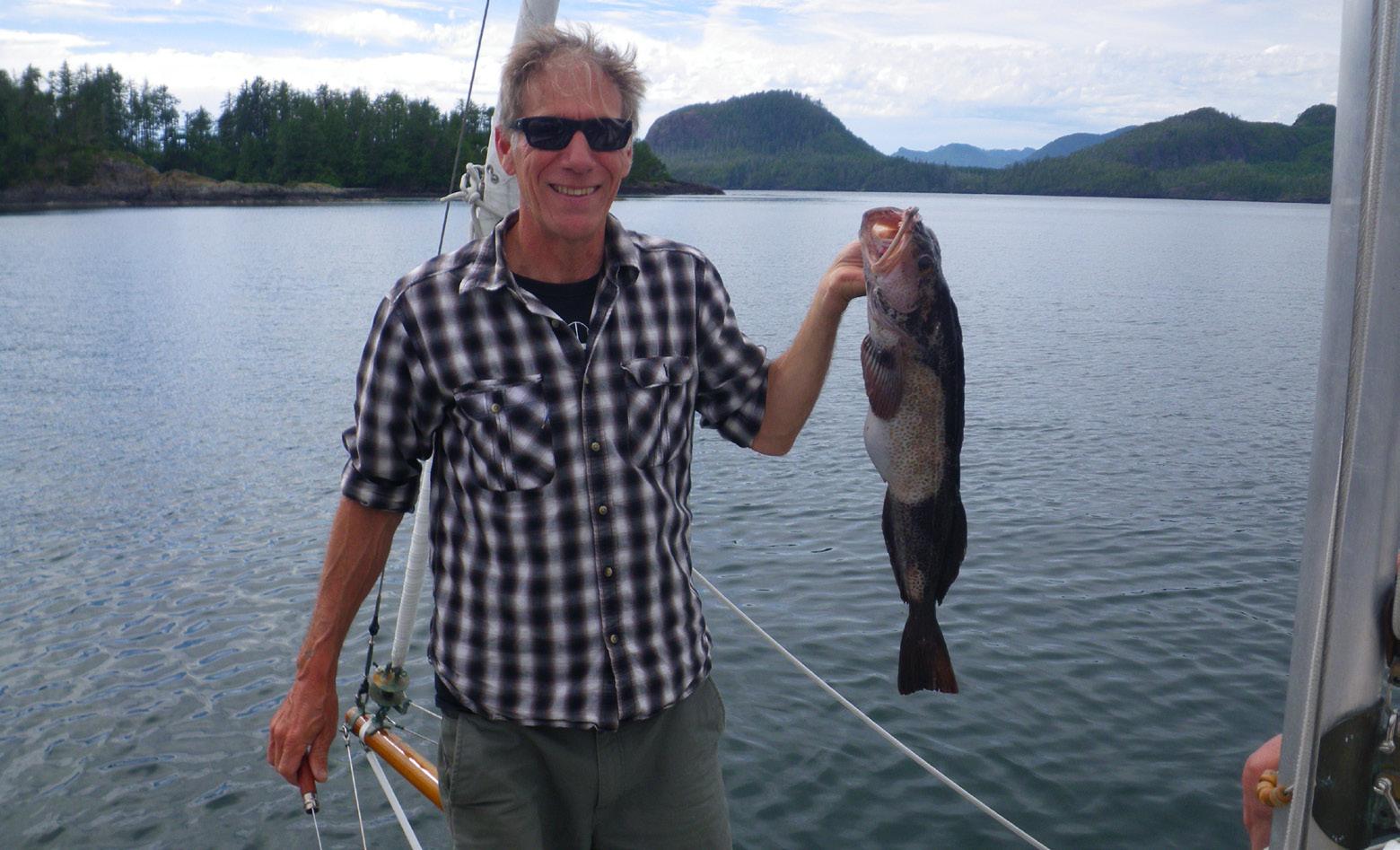
right
Ling cod for dinner Desperate hiking for surf spots
conditions we could have asked for and a most memorable passage. Stop in
In just two days, we had covered half the total distance to be travelled before the next planned crew change in another 12 days’ time. It was time to slow down and spend a few days vacationing. Our anchorage was well protected from wind, waves and swell, and only a short hike away from a beautiful sandy beach. Arnt and Sharon’s surfboards had been strapped to Ern’s side deck for the previous three weeks and it was time to find some surf and use them! Even Donald and Charlie gave it a go… with mixed results. On the other hand, I like to be on top of the water, not in it, and especially not if I must first squeeze into a sausage casing of neoprene to protect myself from the cold Pacific water. After three days we were ready to make the short seven-mile sail to our next anchorage, Big Bunsby Marine Provincial Park. But first we had to say goodbye to skipper Charlie, who had plans to meet up with friends 100 miles down the coast. With a blow from our air horns we watched him depart just as the morning mist turned to daytime rain. The forecast for the next day was better and we were not on a schedule, so we stayed another day. The Bunsby group is a small archipelago, rich in marine wildlife, partially due to the influence of sea otters, a keystone species. By the early 1900’s, sea otters had been wiped out in BC, but in 1969, 89 animals were brought to the area from the two remaining North American colonies in Alaska and California. Today their progeny number in the many thousands from North Coast Trail to Barclay Sound. Sea otters are voracious eaters of sea urchin, who are voracious eaters of the kelp holdfast (the root of sorts). The reintroduction of sea otters has reduced sea urchins which has helped the kelp forests grow and survive. This in turn has provided habitat for salmon and herring as well as a substrate for herring to lay their eggs. We certainly saw evidence of this success during our stay at the Bunsbys and we witnessed huge rafts of sea otters, plentiful kelp forests, and massive schools of juvenile herring tightly packed together just under the surface. The bliss that we had been experiencing since Winter Harbour continued as we leisurely made our way down Vancouver Island, each day in the sunshine, with the wind and waves in our favour. We stopped in Kyuquot to replenish our ice and over the next few days, enjoyed stops in Clanninick Bay, where we swam and fly fished in the Clanninick River, before moving the short distance to Rugged Point Marine Provincial Park, another planned stop for the surfers.
The anchorage at Rugged Point wasn’t totally protected from the NW swells and our nights were bumpy, but it was worth the semi-restless sleeps in order to spend time exploring the area. After cleaning the ling cod that Arnt had caught that afternoon—fish tacos for dinner!—we rowed to shore and took the short trail across the peninsula through a towering old growth forest. The dense, damp, coolness of the rainforest opened onto a mile-long white sand beach and like every beach and anchorage so far, we had it to ourselves, or sort of to ourselves. There were large predator tracks everywhere! We were walking low on the beach, where the tide had been just hours before, and within three arm’s reach of where we were standing, we saw the fresh prints of black bear, cougar, and wolves which gave us pause to think that at least one of those animals was possibly just inside the treeline, looking at us strolling along their beach. By now we were two days away from a crew change. So, with sunshine and following winds, we raised anchor for the 22-mile trip to Louie Bay on Nootka Island. We were still enjoying the very best sailing conditions we could ask for and the trip down to Nootka was another stunner. Along the way we saw dozens of waterfalls, spectacular wave spouts that shot 40 feet into the air, and hundreds of sea caves. The fishing was excellent and we augmented our provisions with salmon, ling cod, rockfish, and clams, as well as enjoyed a few varieties of seaweed, sea asparagus, huckleberries… it was a never ending buffet! At Louie Bay we took time to explore the hulking remains of a large steel boat we heard had been brought there about 50 years ago for a shipbreaking enterprise. It had been dragged into shallow water and cut into huge
sections before the bottom fell out of the scrap iron market. Today it is a twisted, rusting sculpture. After a few hours exploring on foot we headed back to the boats. The wind and waves had shifted and by the time we got back, Ern and Odin were bucking against their anchor chains. We would have to find a better anchorage if we wanted to avoid a long, sleepless night. We made our way six miles up
Nuchatlitz Inlet to Mary Basin where we found flat, calm waters and enough landing space for the float plane which was coming with a new crew and supplies in two days’ time. Until then the forecast called for overcast conditions and lots of rain, but there would be a few dry enough periods for a good hike, rowing in the tenders, and reading curled up in the cockpit under the bimini cover. That evening we enjoyed spectacular bouillabaisse made with salmon, ling cod and clams and more than a few songs on the two guitars. It was another very peaceful night’s sleep. In the previous two weeks we had travelled just over 100 kms as the crow flies from Winter Harbour to Mary
Basin. It proved to be our most leisurely portion of the trip and the entire experience had been fantastic. The next morning was our scheduled crew change and I’ll pick up there with my final instalment.









